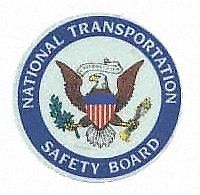Thu, Nov 11, 2004
Aircraft Apparently Entered Stall At 41,000 Feet
 The National Transportation Safety
Board Wednesday released the following update on its investigation
of the October 14, 2004 crash of Pinnacle Airlines flight
3701 in a residential area in Jefferson City (MO). The
two crewmembers, who were the only occupants on board, were killed,
and impact forces and a postcrash fire destroyed the airplane.
There were no injuries on the ground. The on-scene portion of the
investigation finished on October 20, 2004.
The National Transportation Safety
Board Wednesday released the following update on its investigation
of the October 14, 2004 crash of Pinnacle Airlines flight
3701 in a residential area in Jefferson City (MO). The
two crewmembers, who were the only occupants on board, were killed,
and impact forces and a postcrash fire destroyed the airplane.
There were no injuries on the ground. The on-scene portion of the
investigation finished on October 20, 2004.
The two GE CF34-3B1 engines were shipped to a General Electric
Aircraft Engine facility in Lynn, Massachusetts for detailed
examination. The examination found that the cores of both engines
were free to rotate and there was no indication of any pre-existing
problems that would have led to the accident.
The flight data recorder (FDR) data indicate that while the
airplane was at 41,000 feet, the stick shaker and stick pusher
activated several times before the airplane entered an aerodynamic
stall. Almost simultaneously, both engines shut down. The
air-driven generator was automatically deployed and supplied the
backup alternating current power to the airplane.

According to the emergency checklist for a dual engine failure,
there are two ways to restart or relight the engines. One option is
to use a windmill restart, which requires at least 300 knots
indicated airspeed and the core of the engine to be either 12
percent rpm above 15,000 feet or 9 percent rpm below 15,000 feet.
The FDR data show that the computed airspeed did not get above 300
knots and that there was no measured rotation of the engine
core.
The second option is to use auxiliary power unit (APU) bleed
air, which has to be accomplished at 13,000 feet or below. The
target best glide speed depends on the weight of the aircraft and
is either 190 knots indicated airspeed or 170 knots indicated
airspeed. The FDR data indicate that the APU was on after the
aerodynamic stall and that the airspeed was sufficient for an APU
start. The FDR and CVR indicated that the flight crew tried to
start the engines several times but were unsuccessful.
The operations group is still conducting interviews and
developing the 72-hour history for the flight crew. The operations
group has scheduled interviews with the Federal Aviation
Administration principal operations inspector and several managers
for the operator. The systems, powerplants, and aircraft
performance will visit the airplane manufacturer.
More News
He Attempted To Restart The Engine Three Times. On The Third Restart Attempt, He Noticed That Flames Were Coming Out From The Right Wing Near The Fuel Cap Analysis: The pilot repor>[...]
Make Sure You NEVER Miss A New Story From Aero-News Network Do you ever feel like you never see posts from a certain person or page on Facebook or Instagram? Here’s how you c>[...]
From 2009 (YouTube Edition): Leading Air Show Performers Give Their Best Advice for Newcomers On December 6th through December 9th, the Paris Las Vegas Hotel hosted over 1,500 air >[...]
Aero Linx: NASA ASRS ASRS captures confidential reports, analyzes the resulting aviation safety data, and disseminates vital information to the aviation community. The ASRS is an i>[...]
“For our inaugural Pylon Racing Seminar in Roswell, we were thrilled to certify 60 pilots across our six closed-course pylon race classes. Not only did this year’s PRS >[...]
 NTSB Final Report: Rutan Long-EZ
NTSB Final Report: Rutan Long-EZ ANN FAQ: Turn On Post Notifications
ANN FAQ: Turn On Post Notifications Classic Aero-TV: ICAS Perspectives - Advice for New Air Show Performers
Classic Aero-TV: ICAS Perspectives - Advice for New Air Show Performers ANN's Daily Aero-Linx (06.28.25)
ANN's Daily Aero-Linx (06.28.25) Aero-News: Quote of the Day (06.28.25)
Aero-News: Quote of the Day (06.28.25)




